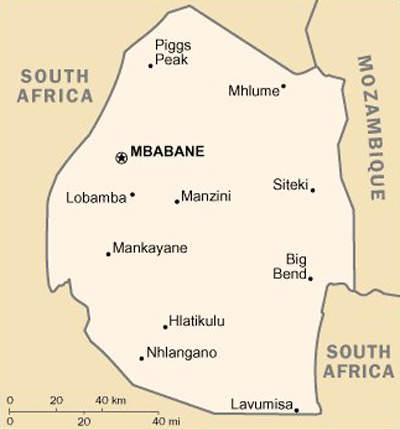In 2003 the Kingdom of Swaziland embarked on construction of the $150m Sikhuphe Airport project as part of King Mswati III’s $1bn millennium project investment initiative to enhance Swaziland’s position as a leading tourist destination in the region.
The airport is being built to serve as the country’s only international airport. Swaziland is currently serviced by Matsapa Airport, which can only handle trans-Atlantic or inter-continental flights and serves largely as a charter airport for small regional carriers such as SA Airlink.
Minister of Economic Planning and Development Prince Hlangusemphi said they were looking forward to the participation and support of all the friends of Swaziland in the project.
“The team of ambassadors have airlines in their countries and these are the countries we are targeting because they have big airlines that also operate in Africa. They have a wealth of experience in this regard and we want to see how they can encourage their people to use our facilities,” said Prince Hlangusemphi.
He added that he was confident that they will deliver the airport on time, in accordance with the set deadline of March 2010. The airport is, however, anticipated to be completed by late 2011.
Sikhuphe airport design
The new airport will comprise of a CAT 1 runway together with connections taxiway apron, terminal building, ATC tower, fire station, police station, fuel farm, supporting building, access roads, security fencing and others. Radar systems and two independent power supplies are also being installed. The airport is expected to handle 300,000 passengers a year.
A decision on airport operations will be made in time for the preferred operator to influence the design of the new terminal building. To ensure the timely implementation and innovation to the project, it was recommended that a build-operate tender be issued. This approach was to ensure that interested contractors look for credible operators in order for their bid to be considered.
As construction commences, the operator together with the PMU, will engage in a vigorous marketing campaign for the airport, with the aim of attracting traffic into the new airport.
A master-planning document that will be bankable to both donors and investors has been produced as a tool for accessing finance for the project.
Sikhuphe airport construction
Construction on the bulk of airport services and the runway were started during 2003/2004. The design review of the terminal building was completed by 2004/2005.
This represented phase I, which comprised infrastructure and buildings in the new airport. The development of detailed design and tender documents had been completed by Arab Consulting Engineers. The designs had been evaluated by both advisors and the PMU. The necessary amendments have been made and the designs are complete. The 3,500m-long runway has been completed.
Proposals had been submitted to modify the roof design of the airport to reflect Swazi architecture at a reasonable cost to the government. It is also proposed to change the layout of the airport, resulting in a significant reduction in cost without compromising ICAO or any other international standards. If the government accepts these changes, the cost of the airport will be reduced.
The airport construction also involved the resettlement of local villagers in the Sikhuphe area. New houses were built for residents starting in 2004, continuing into 2005. Construction of most of the airport facilities and services have been completed.
Terminal features
The terminal has been designed according to International Air Transport Association (IATA) class C (business class) passenger accommodation. The terminal apron is built to be 64,000m². Complete departure and arrivals facilities, including security screening, hold baggage screening, immigration and customs are provided in the terminal, among others. Transit passenger facilities complying with International Civil Aviation Organization (ICAO) standards are provided. Baggage systems include hold baggage screening (HBS) systems.
Cargo facilities consist of a 1,000m² facility capable of handling 5,000t of cargo per annum.
Air traffic control
The ATC tower is designed in a way that it can be expanded and re-configured in future. It is built according to ICAO recommendations. The equipment used at the ATC includes monopulse secondary radar, instrument landing systems and meteorological equipment. Communication facilities include radio navigational aids, VHF and UHF radio systems, fibre optic network, etc.
Sikhuphe airport runway
Category I runway 02 – 20 has a designated length of 3,580m and a width of 45m. It can accommodate code E aircraft. B777-300, B747-400 or A340-600 can be accommodated at the turn pads at the runway end.
Airport capacity
Once completed Sikhuphe Airport will operate as an international hub with the capacity to handle Boeing 747 aircraft and service flights to any destination in the world.
The airport is intended to serve as a tourism gateway to the Kruger, Maputo, Kwa Zulu Natal, Victoria Falls and Swaziland’s game parks.
Airport funding
Funding for the airport has been drawn from the $1bn millennium fund. This funding was not enough for the full extent of the project and the government had embarked on an aggressive campaign to raise further funding. The funding ultimately came from the Government of Swaziland. The Taiwan government also contributed $22 m for the project.
A $1m feasibility study was awarded to the Egypt-based Arab Consulting Engineers. The consultants had to develop a detailed implementation and funding model for the proposed airport.






